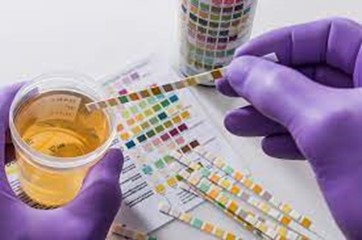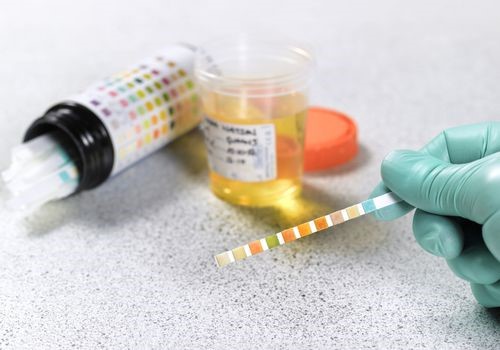A drug test generally involves finding out whether an individual has been consuming illegal or prescribed substances such as cocaine, marijuana, methadone, amphetamines, and so on. These tests include a thorough analysis of a sample of blood or urine or saliva or hair or sweat. A biological specimen is a necessary prerequisite for conducting a drug test.
Drug testing is performed randomly in cases where the chances of substance abuse are low or zero. But to get a detailed analysis or report of consumers, panel testing is a proper way. Different panel drug tests indicate which drug or family of drugs is included in the drug test. Panel drug tests include: 5,6,7,8,9,10,11,12,13, and 14 types of panel drug testing. These numbers indicate the number of screening tests involved with each test.
A 13-panel drug test includes screening thirteen different classes of drugs, just like a 9-panel drug test includes collecting urine samples that undergo screening nine different classes of drugs. Let’s discuss these panel drug tests as follows:
5-Panel Drug Test:

In workplaces, generally, a 5-panel drug test is implemented. It performs tests for marijuana, cocaine, opiates, phencyclidine, and amphetamines. The Department of Transport approves this standard of testing and recommends implementation in workplaces. Sometimes alcohol testing is also included with the testing of these five illicit drugs.
6-Panel Drug Test:
The 6-panel drug test includes screening for substances like marijuana, cocaine, opiates, amphetamines, methamphetamines, and benzodiazepines. It also uses urine to check the presence of drugs. Compared to the 10-panel drug test, the drugs identified in these tests are illicit, rarely found, and prescribed.
7-Panel Drug Test:
This type of panel testing checks drug abuse through hair follicle samples. The screening looks for drugs, including marijuana, cocaine, opiates, phencyclidine, amphetamines, barbiturates, and benzodiazepines.
Barbiturates are a sedative and hypnotic drug that decreases anxiety and fights insomnia. Similar to sleeping pills or alcohol, it creates a downer effect on the brain. Misuse or abuse of it is often for suicide attempts that either leads to death or coma. 7-panel drug tests include testing of a dangerous class of drugs.
8-Panel Drug Test:
The 8-panel drug test adds Quaaludes to remaining marijuana, cocaine, opiates, phencyclidine, amphetamines, barbiturates, and benzodiazepines drugs.
Quaaludes has lost popularity in North America, currently, but it is used as a muscle relaxant and aphrodisiac. Quaalude is a brand name for a drug called methaqualone.
9-Panel Drug Test:

For a 9-panel drug test, 4 mL urine is collected. It checks for drugs, including marijuana, opiates, cocaine, PCP, amphetamines, barbiturates, benzodiazepines, methamphetamines, methadone.
Methadone is a synthetic opioid that causes sedation and analgesia in consumers. Medically it is provided to those suffering from acute pain.
It also treats heroin addiction. Methadone helps in the drug detoxification process. But its overdose can lead to side effects like dizziness, rashes, hallucinations, nausea, sweating, confusion, and constipation. Once consumed, methadone can stay in the body for 2 to 13 days.
It reduces cravings, but people tend to get addicted to it and depend on it by increasing dosage. This dosage percentage gets identified in the 9-panel drug test.
10-Panel Drug Test:
In a 10-panel drug test, methaqualone and propoxyphene abuse is checked. These are the most commonly misused and street drugs. Other drugs for screening include marijuana, opiates, cocaine, PCP, amphetamines, barbiturates, benzodiazepines, and methadone.
A 10-panel drug test doesn’t screen for alcohol. While organizations do not conduct this in-depth panel test, front-line workers are required to do so. These include law enforcement officials, medical professionals, and government employees of the U.S.
11-Panel Drug Test:
Drugs tested in an 11-panel drug test include an 8-panel drug test and Methadone, Oxycodone, and Tricyclic antidepressants.
An 11-panel drug test confirms abuse or misuse of marijuana, cocaine, opiates, phencyclidine, amphetamines, barbiturates, benzodiazepines, Quaalude, methadone, oxycodone, and tricyclic antidepressants.
Due to their side effects, TCA’s or tricyclic antidepressants are no longer prescribed to individuals as it is capable of causing impairment, exhaustion, and anxiety in consumers.
12-Panel Drug Test:
A 12-panel drug test is typically a 10-panel drug test with Percocet or oxycodone and ecstasy or MDMA added elements. These drugs are from the expanded amphetamine class that also includes molly. Most employers perform this type of panel testing to get an aggressive drug screening of employees.
Expanded opiates tested under this category include Percodan, oxymorphone, and hydrocodone. If these drugs are present in the body between 1 to 3 days, they get detected by this panel test.
13-Panel drug test:
A 13-panel drug test is a testing strategy commonly implemented in organizations with safety-sensitive positions. For example, motor vehicle and cargo firms perform screening of 13-panel drug testing on their employees.
These tests generally highlight the consumption of THC marijuana(tetrahydrocannabinol), opiates, cocaine, amphetamines, methadone, methaqualone, barbiturates, benzodiazepine, propoxyphene, buprenorphine, oxycodone, TCA in individuals.
For a 13-panel drug test, a urine sample is collected and processed to confirm any of the mentioned substances abuse. However, a urine sample can be easily manipulated, contaminated, and diluted. Hence the drug test is performed under the supervision of a medical officer. Private laboratories generally don’t perform and provide 13-panel drug tests to avoid further false reports.
14-Panel Drug Test:
Highly addictive painkillers consumption is detected in this 14-panel drug test. Tramadol and Demerol are medications that treat severe pain conditions, but consumers can get addicted to them and depend on their intake. A 14-panel drug test is performed by using hair follicle or urine samples. It also confirms abuse of expanded opiates and amphetamines class drugs.
The drugs tested in the 14-panel drug test include THC marijuana (tetrahydrocannabinol and cannabinoids), opiates, cocaine, amphetamines, methadone, methaqualone, barbiturates, benzodiazepine, propoxyphene, oxycodone, TCA, PCP, Tramadol, and Demerol.
The detection window for these drugs ranges between 1 to 4 days.
Other Drug Tests:
While these mentioned above suffice the necessary drugs to be tested, other panel drug tests like a 16-panel drug test, 20-panel drug test, and 22-panel drug test also exist.
15-panel drug test screens for nearly all opioids, using a urine or hair follicle sample. The 20-panel drug test is performed when the drugs to identify are unclear. The 22-panel drug test is an ultra-comprehensive panel drug test that checks for any narcotic and foreign substance.
Conclusion:
A panel drug test confirms the presence of drugs and the percentage of drug abuse in individuals. The panel is decided based upon the family of drugs one wants to check if an individual is consuming. If that criterion is vague or uncertain, a 20-panel drug test is performed that identifies any type of substance abuse. However, nowadays, a 5-panel drug test is insufficient because many of those drugs are prescribed legitimately, and therefore it’s not enough to determine its abuse due to varying dosages.
In the 9-panel drug test, the most commonly abused drugs are included. These are capable of determining whether an individual is fit to work in any organization. The overdose of such drugs can lead to fatal outcomes, and its addiction is dangerous that accompanies imminent side effects like slowed heartbeats, fainting, and seizures.
Organizations use this test panel before recruiting employees to ensure that they’re reliable and not a threat. A 9-panel drug test is also performed on athletes to ensure that they don’t misuse these drugs to enhance their play on the field.
